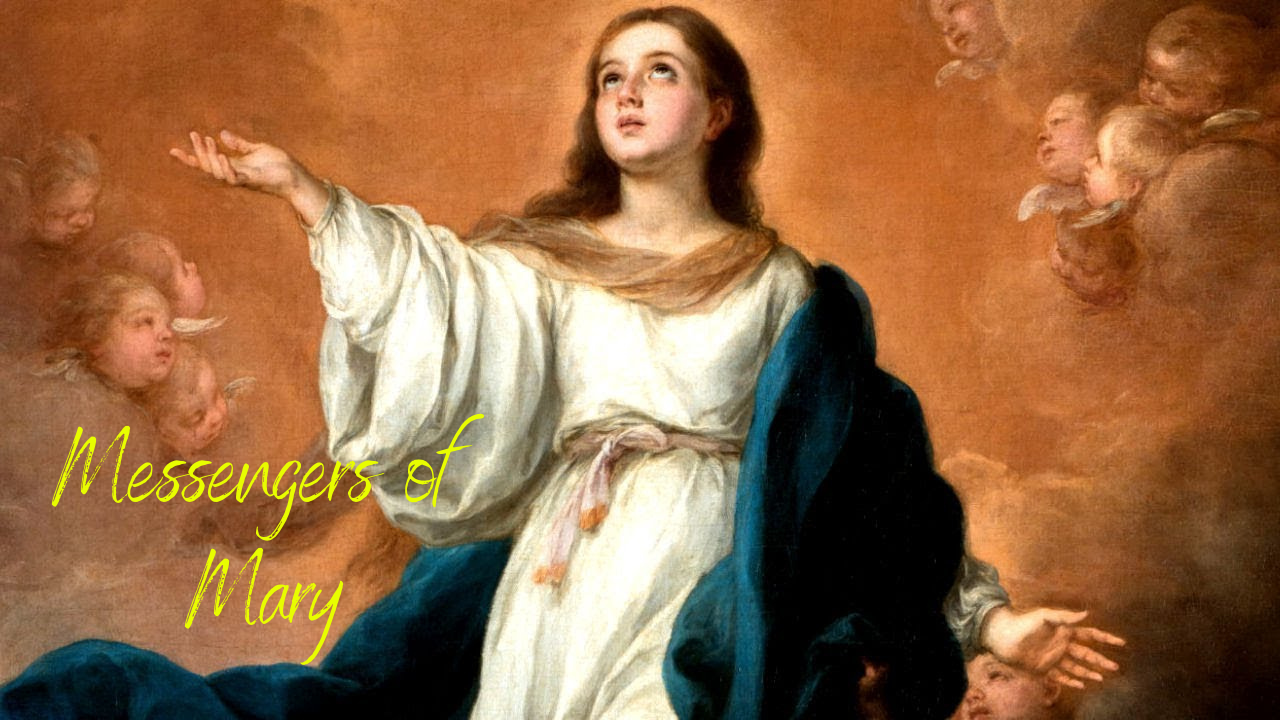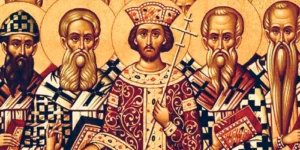The Divine Maternity of the Blessed Virgin Mary is said to be the great dignity from which all Her other privileges and honours stem, for example, Her Immaculate Conception, Her Perpetual Virginity, Her Fullness of Grace and so forth with all the other titles under which She is recognised by the Church. The doctrine of the Divine Maternity was officially formulated by the Catholic Church at The Council of Ephesus in 431.
The session met in June and July of that year at the Church of Mary in Ephesus, Anatolia. Essentially the Council confirmed the original Nicene Creed and condemned the teachings of Nestorius, Patriarch of Constantinople, who held that the Virgin Mary should be called the Christotokos, “Birth Giver of Christ” but not the Theotokos, Birth Giver of God.”
Nestorius, after facing the opposition of various Church leaders, and notably a holy and learned man named Cyril, Patriarch of Alexandria, had, with the permission of Pope Celestine, begged the Emperor Theodosius II to call a council to discuss the grievances in which he might be justified and Cyril condemned.
However, the proceedings resulted in quite the opposite outcome. There was a statement (one of the Twelve Anathemas of Saint Cyril) that ran as follows, “Anyone who dares to deny the Holy Virgin the title Theotokos is Anathema!” After the official teaching had been expressed, the crowds of faithful Christians shouted for joy, saying “Theotokos! Theotokos!”
As for Nestorius, rather than recant his error, he went his way and created the Nestorian Schism. The representatives of this break away group are the Assyrian Church of the East, the Ancient Church of the East, the Chaldean Syrian Church and what is called the Chaldean “Catholic” Church. Certainly one of the signs of heresy is obstinacy and pride.
It is a heresy to deny an official teaching of the Church. John of Antioch tried to warn Nestorius of his error (this was after he had been threatened by Rome with excommunication) when he wrote to him saying, “Don’t lose your head. Ten days! It will not take you twenty-four hours to give the needed answer…. Ask advice of men you can trust. Ask them to tell you the facts, not just what they think will please you…. You have the whole of the East against you, as well as Egypt.” But despite this advice from his colleagues, Nestorius persisted in maintaining the rightness of his position.
The Correct Sense of the Doctrine

So how do we explain this title of Mother of God? Any why precisely was Nestorius in the wrong? Well, when we refer to someone’s mother, we do not say that she is the mother of a nature but the mother of the person, i.e., she is his mother, not the mother of his nature or of his body.
Now in the case of Mary, although She is the Mother of God, She is not His mother in the sense that She is older than God or the source of Her Son’s Divinity. Rather, She is Mother of God in the sense that She carried in Her womb a Divine Person—Jesus Christ, God incarnate.
It is also true that She contributed the genetic matter to the human form God took in Jesus Christ. Again, a mother does not merely carry the nature of her child in her womb, but she carries him or her. The Nestorian claim is that Mary did not give birth to the unified person of Jesus. What results is an attempt to separate the human and Divine natures to the point of creating two separate and distinct persons.
So the beautiful truth of Mary’s Maternity remains firm and we are right to honour Her, not only as the God-Bearer, but also as the spiritual Mother of each of us faithful Christians, members of Christ’s Mystical Body.
Let us remember St Elizabeth’s joyful reaction when Mary came to visit her: “And she cried out with a loud voice, and said: Blessed art thou among women, and blessed is the fruit of thy womb. And whence is this to me, that the mother of my Lord should come to me? For behold as soon as the voice of thy salutation sounded in my ears, the infant in my womb leaped for joy.” (Luke 42:43).

